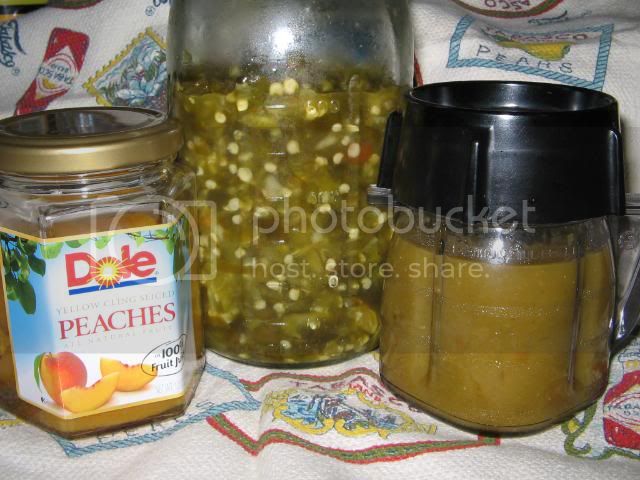After being inspired recently by fellow THP member RocketMan, I made my first fermented batch of peppers of the 2011 season. And while I was at it, decided to assemble a simple step by step pictorial of the process.
I used the Nourished Kitchen recipe found at:
http://nourishedkitchen.com/fermented-hot-chili-sauce-recipe/
.....substituting peppers from my plants along with a few Hab's I purchased.
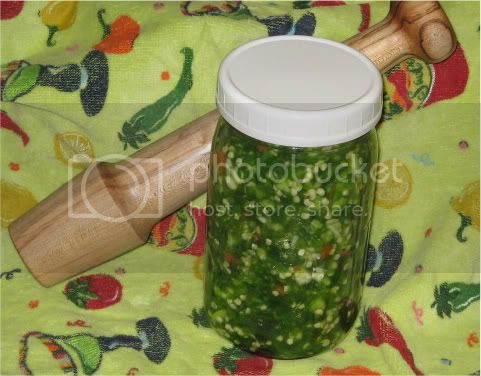
I hope others find this helpful and realize how relatively easy, along with healthy and safe fermentation can be.
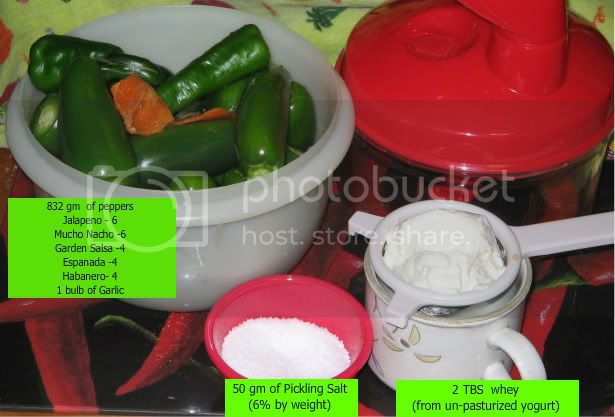
(Pepper and salt measurements by weight rather than volume)
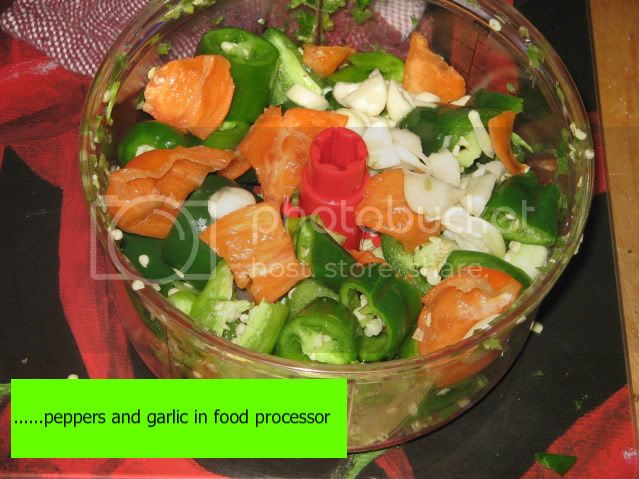
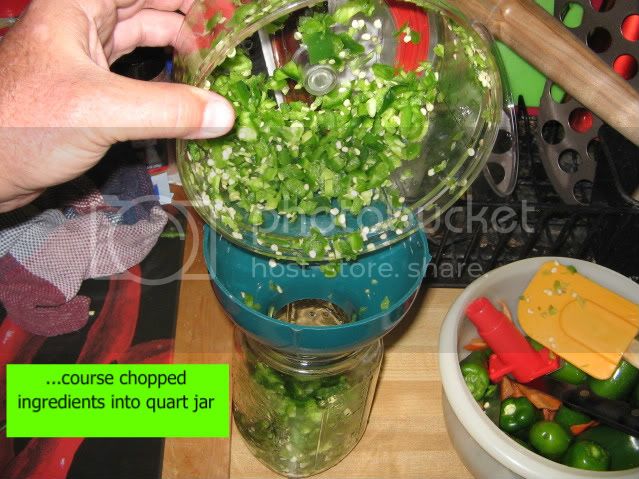
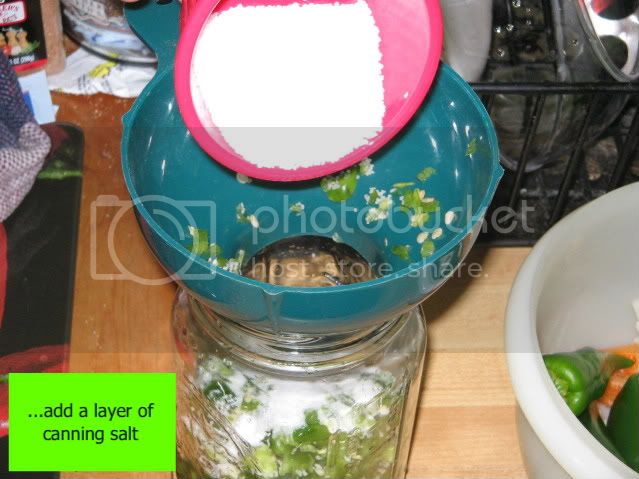
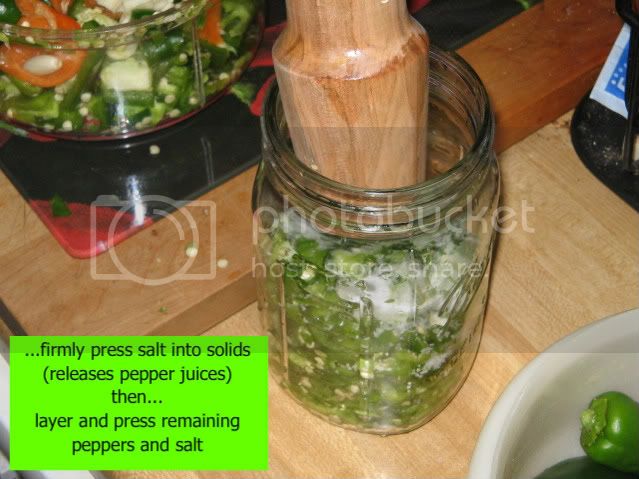
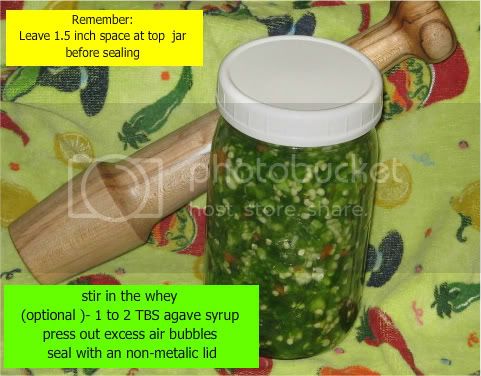
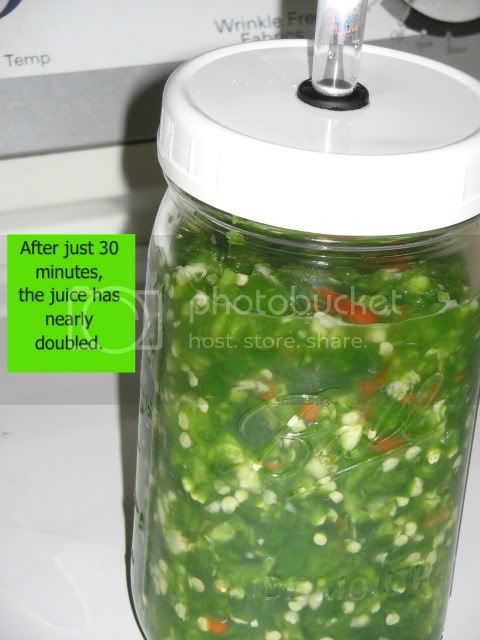
I prefer to use air locks rather than needing to monitor the sealed jar and release pressure when required. However, both methods will achieve successful results.
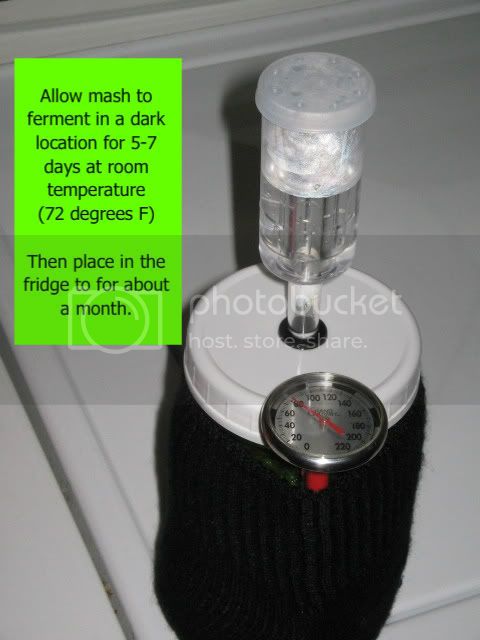
Note:
Since the room temperature is 80 degrees, this batch should be ready for the fridge after about 5 days, where as with cooler temps the initial fermentation might take a full 7 days.
Nourished kitchens also has an excellent resource e-book titled "Get Cultured" which can be downloaded free at:
http://nourishedkitchen.com/get-cultured/
Get Cultured contains helpful techniques and instructions in addition some great fermenting recipes for vegetables and peppers.
Enjoy!
EDIT: for typo's
I used the Nourished Kitchen recipe found at:
http://nourishedkitchen.com/fermented-hot-chili-sauce-recipe/
.....substituting peppers from my plants along with a few Hab's I purchased.

I hope others find this helpful and realize how relatively easy, along with healthy and safe fermentation can be.

(Pepper and salt measurements by weight rather than volume)






I prefer to use air locks rather than needing to monitor the sealed jar and release pressure when required. However, both methods will achieve successful results.

Note:
Since the room temperature is 80 degrees, this batch should be ready for the fridge after about 5 days, where as with cooler temps the initial fermentation might take a full 7 days.
Nourished kitchens also has an excellent resource e-book titled "Get Cultured" which can be downloaded free at:
http://nourishedkitchen.com/get-cultured/
Get Cultured contains helpful techniques and instructions in addition some great fermenting recipes for vegetables and peppers.
Enjoy!
EDIT: for typo's

